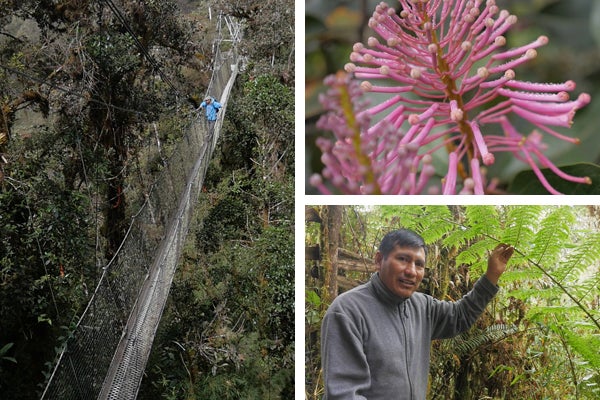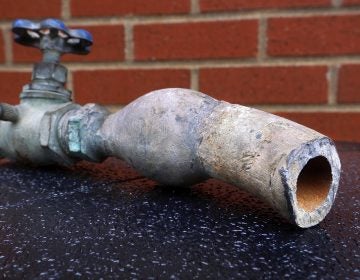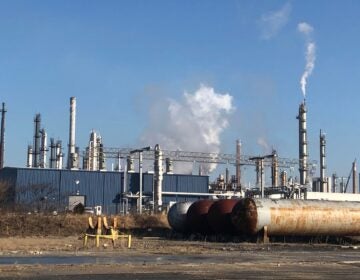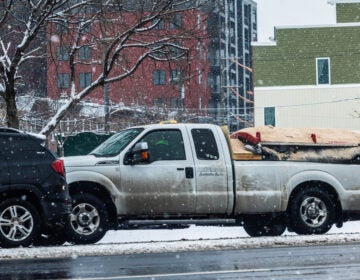What’s a cloud forest without clouds?
Listen 6:08
Sunset at Wayqecha Biological Station at 10,000 above sea level. Below, the Amazon Basin stretches out for thousands of miles toward the Atlantic Ocean. (Dan Grossman/for WHYY)
Scientists say climate change could dry out misty jungles in the Andes of Peru.
Along mountainsides in Central and South America, vast expanses of trees and plants are perpetually bathed in fog. But some scientists predict that climate change could dry out those high-altitude jungles, known as cloud forests.
Biologist Dan Metcalfe has devised an experiment designed to mimic future drier conditions to see what would happen next. His research is taking place at the Wayqecha Biological Station, 10,000 feet above sea level, in the Andes of southeast Peru.
Simeon Quispe, a local, says that he and other Quechua Indians in the region harvest cloud-forest plants for traditional medicines.
A fern called sano sano, which literally means health health is used as an anti-inflammatory. Indigenous people crush it and apply it to wounds and they sometimes steep it for medicinal tea. There’s also an herb Quechua people use for liver and kidney problems.
Many of these medicinal plants grow only in misty jungles like this one. And some researchers say global warming could dry out the forest and ruin this natural pharmacy.
Through a gate and down a trail is the experiment Metcalfe hopes will give him a prognosis for this and similar cloudy forests. But the work is on hold for the moment: some of the gear he ordered is stuck at Peruvian customs in the capital.
On the trail to the research site, we pass carpenters at work, thickets of trees glistening with water droplets — and a snake. After half an hour, we arrive in a deep valley cut by a river and see a narrow bridge swaying from cables strung between two towers.
Metcalfe teaches at Lund University and has a grant from Sweden for his project. His plan is to build an additional tower. He’ll hang long strips of loosely woven fabric from a cable strung between an existing tower and the new one.
“It’s going to look like a large translucent wall that stretches pretty much as far as we can see from side to side through the forest,” he says.
Fog rolling up this valley will blow into the fabric wall and its moisture will condense onto the fibers. The research was inspired by farmers who use large rectangular nets to harvest moisture from low clouds for their crops.
“My dreams are that when it gets foggy and cloudy that we’re going to see like a big bank of fog building up on one side,” Metcalfe says. “And then on the other side it will be relatively clear.”
If it works, the patch of jungle behind the cloud curtain will be drier than normal.
So what will happen to the mist-loving organisms there? Some plants in this region don’t root in the ground — and can’t suck up water from the earth. That includes orchids and mosses that live on trunks and branches.

Left: Dan Metcalfe crosses a pedestrian bridge to the site of his research project. Top right: Much of the moisture that waters plants in cloud forests blows in as fog, rather than falling as rain. Bottom right: Simeon Quispe says he and other indigenous Quechua people use many jungle plants for traditional remedies. (Dan Grossman/for WHYY)
Metcalfe isn’t sure what changes drying might cause. So he’ll study many factors from the ground to the canopy. In the soil, he’ll measure the biomass and growth of roots and the amount of carbon dioxide being released.
Higher up, he’ll monitor the amount of leaves and fruits and flowers trees drop. He’ll compare what he finds with other control plots nearby that remain misty.
Daniel Nepstad, who directs the San Francisco-based Earth Innovation Institute, says that large ecosystem experiments, such as Dan Metcalfe’s could provide “a glimpse into the future.” Nepstad once ran a similar experiment simulating drought in the Amazon. He says reduced fog also needs to be studied.
Dan Metcalfe had hoped to have his cloud curtain erected already. But he’s had a few obstacles. The tower was harder to design than he expected. He couldn’t carry heavy gear on the steep trail. He had to avoid trampling rare plants. Key members of his team had health problems, and then a fire destroyed some of this equipment.
Metcalfe says he had no idea how hard it would be to get the experiment underway. And maybe that’s just as well. “It was good I had no idea.”
The experiment could be up and running soon. But, like any cautious scientist, Metcalfe will believe it when he sees it.
A grant from the Pulitzer Center on Crisis Reporting supported Daniel Grossman’s reporting.
WHYY is your source for fact-based, in-depth journalism and information. As a nonprofit organization, we rely on financial support from readers like you. Please give today.






